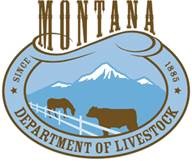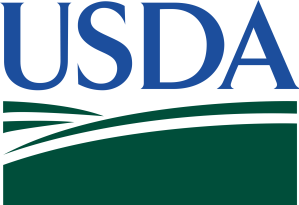 Editor’s Note: Part one of a series of articles in which we will look at trade and the organizations that set the standards for these agreements. The next article will focus on the World Organization for Animal Health (OIE). Provided by National Cattlemen’s Beef Association for educational purposes.
Editor’s Note: Part one of a series of articles in which we will look at trade and the organizations that set the standards for these agreements. The next article will focus on the World Organization for Animal Health (OIE). Provided by National Cattlemen’s Beef Association for educational purposes.
Trade is a fundamental part of America’s cattle industry, and with new pacts on the horizon like the Trans-Pacific Partnership and the Transatlantic Trade Investment and Promotion agreement the beef industry is poised to take advantage of greater opportunities ahead. Ninety-six percent of the world’s population lives outside of United States’ borders, and it is critical to capitalize on these foreign markets to maximize profit margin. Beef demand looks different across the world, and foreign markets drive demand and increase profitability for beef cuts that are less popular here in the states, drivers our cattle industry can capitalize on. In 2013, trade brought home more value to the producer than ever in the past – $307 per head or $6.15 billion total. This premium underlines the value of trade for all segments of our industry. And the major regulator of these opportunities is the World Trade Organization.
The WTO has a long history in international trade. Its formation reaches back to the Treaty of Versailles and the end of World War I, with the establishment of the League of Nations. After World War II, the General Agreement on Tariffs and Trade was formed. And in 1995 with the Uruguay Round of trade negotiations, under the age is of the GATT, the WTO was formally created to discuss and negotiate the further development of trade rules and seek peaceable resolution to trade disputes. With its history in war, the main function of the WTO then as now, is to ensure that trade flows as smoothly, predictably and freely as possible.
To secure these market opportunities, countries work through the WTO. The WTO was built around trade agreements which were negotiated and signed by many of the world’s leading trade nations. These documents provide the legal ground rules for international commerce. They are essentially contracts, binding governments to keep their trade policies within agreed limits. Although negotiated and signed by governments, the goal is to help producers of goods and services, exporters, and importers conduct their business, while allowing governments to meet social, environmental and safety objectives.
Economic development and well-being is dependent upon free trade and as such, the WTO’s overriding purpose is to help trade flow as freely as possible — so long as there are no undesirable side effects. That partly means removing obstacles and ensuring that individuals, companies and governments know what the trade rules are around the world, and giving them confidence and security without fear of sudden policy changes.
Which brings us to the point of why WTO is important and what their role is in international trade. The NCBA does not necessarily work with WTO directly; we work with our government, the U.S. Trade Representative and the governments of other nations affected by decisions at the WTO. But the WTO makes many of their trade decisions based on standards set by other organizations. WTO gives these organizations credence by recognizing the standards they set. These organizations, like the World Organization for Animal Health, known by its French acronym OIE, and Codex Alimentarius, set the precedent that WTO looks at and that the cattle industry can use as a guide for animal health and food safety.
When our membership calls for free and open trade based on internationally recognized science, OIE and Codex provide the science that underlies that notion. And that is where NCBA works. Over the past several years and through the next months, we will be attending meetings and submitting comments and documents to ensure that the standards set on the global level for animal health and welfare and food safety are in line with the most recent science and that these standards work for the U.S. cattle industry.
An example would be a beef trade dispute with a country that refused to accept U.S. beef that was at any time fed a beta-agonist. Codex, has a set maximum residue level, or MRL, for certain beta-agonists in meat based on the scientific evidence presented by a varied committee of nations, experts and researchers. Since this level has been recognized internationally, it would be among the standards used if the U.S. were to take up a case against that country’s action at the WTO. And that is the type of action that preserves our ability to trade openly with other nations.
Of course not all WTO disputes are based on sound science. There are many other barriers to trade that the U.S. beef industry works with. There is protectionism both domestic and abroad. Policies like COOL, that discriminate against our trading partners and threaten retaliatory action against our beef exports to Canada and Mexico, which alone make up one-third of our total beef exports. And as with other trade disputes, the WTO is not the only way to work out our differences. As with our relations with China, Japan, the European Union and others; the decisions on how to move forward involve not only the possibility of enforcement at the WTO, but diplomacy and leadership through the Administration and our ambassadors and attachés. But we will continue to work with all of these groups to ensure we can provide the same great high-quality beef we raise and produce here in the U.S. to our customers across the world.
 (The following is a press release from the Montana Department of Livestock after their Board meeting on Tuesday, July 29, 2014. Minutes from the meeting will be available on the DOL website. The Montana Stockgrowers encourages ranchers and members to provide us with feedback. Please contact us through email or call (406) 442-3420.)
(The following is a press release from the Montana Department of Livestock after their Board meeting on Tuesday, July 29, 2014. Minutes from the meeting will be available on the DOL website. The Montana Stockgrowers encourages ranchers and members to provide us with feedback. Please contact us through email or call (406) 442-3420.)














